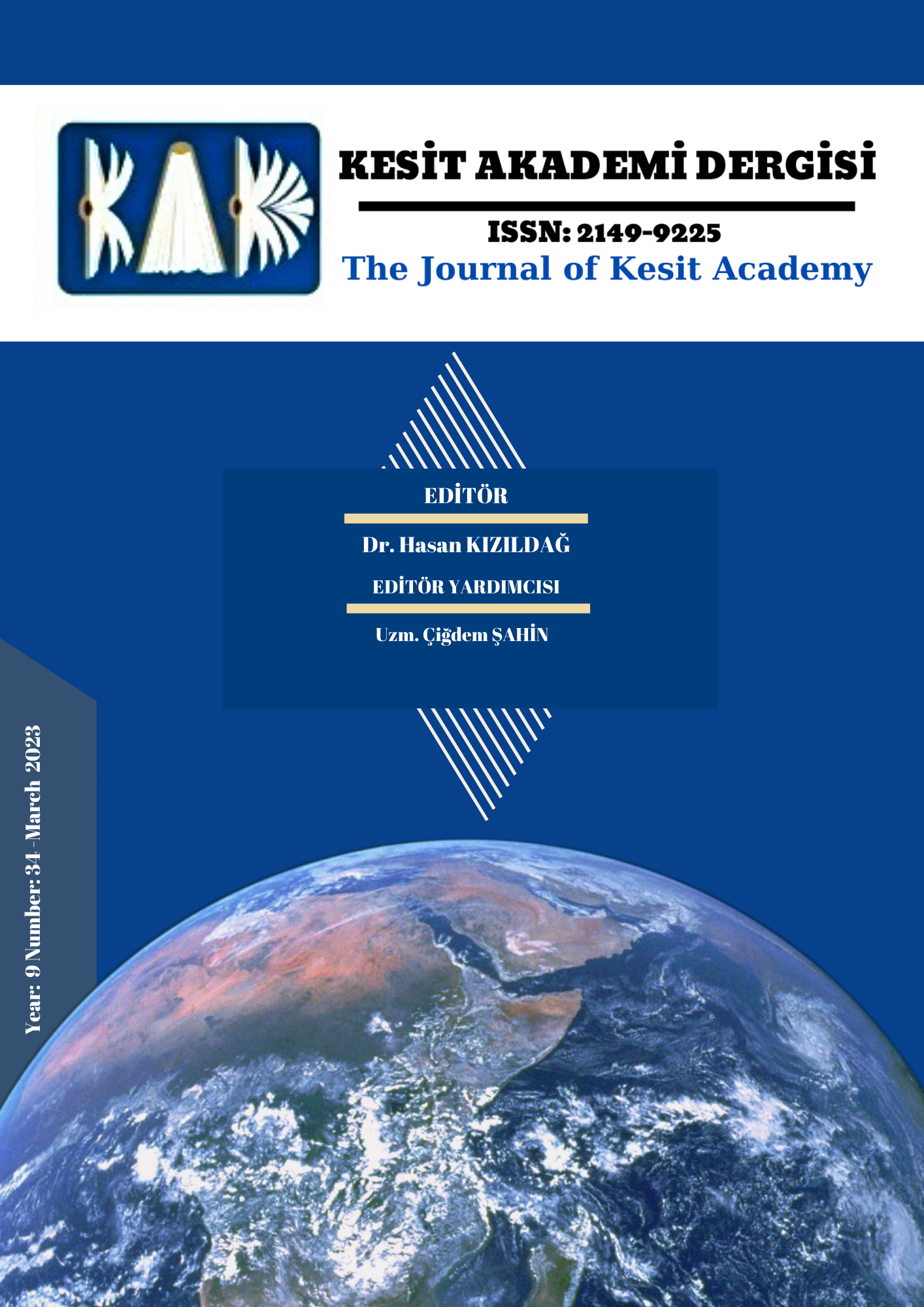Author :
Abstract
Köklü bir geçmişin ürünü olan dokumalar el sanatları içerisinde zengin kültürel bir unsurdur. Nitekim Anadolu coğrafyası binlerce yıllık tarihin önemli kaynaklarına tanıklık etmektedir. Anadolu’da dokumacılık tarihinin çok eski dönemlere dayandırıldığı birçok arkeolojik kazılarla ortaya çıkarılmıştır. Anadolu dokumaları içerisinde birçok bölgede üretilen geleneksel dokuma çeşitlerinden biri de “Alaca” dokumalarıdır. Selçuklu döneminden bu yana dokunan kumaş Osmanlı döneminde ve Anadolu’nun birçok şehrinde dokunmuştur. Alan araştırması olarak seçilen Tokat ili pek çok medeniyetin geliştiği bir kültür mozaiğine sahip olduğu görülmüştür. Özellikle yörede dokunan Alaca dokumaları ön plana çıkmaktadır. “Alaca” sözcüğü araştırıldığında birkaç rengin karışımından oluşan çok renkli anlamını taşımaktadır. Birçok renkli ipliğin birlikte kullanılarak dokunduğu kumaşlarda genel olarak “Alaca kumaş” biçiminde tanımlanmaktadır. Çizgili (çubuklu, yolllu), kareli ve ekose yapıları mevcuttur. Kullanım yeri, malzemesi veya kullanılan yöreye göre de Alaca dokumaları çeşitlendirilmektedir. Geleneksel sanatlar içerisinde kültürel mirasın taşıyıcısı olan dokuma sanatı farklı coğrafi ortamlarda şekillenmiştir. Bulunduğu bölge insanının duygularını ve düşüncelerini aktardığı zengin bir yelpaze oluşturmuştur. Nesilden nesile devam eden gelenek zamanla teknolojiye yenik düşmüştür. Geçmişte Tokat’ın birçok bölgesinde dokuma çalışmaları yapılırken günümüzde sadece Dive yöresinden Tokat merkeze usta öğretici konumunda gelen birkaç dokuma sanatı ustası ve dokuma eğitimi almış diğer usta öğreticilerin özverili çalışmaları ile Tokat Olgunlaşma Enstitüsü bünyesinde dokuma sanatı sürdürülmeye ve yaşatılmaya çalışılmaktadır. Bu çalışmada Tokat ili Dive dokumalarına ait Alaca dokumaların çeşitleri ve özelliklerinin incelenmesi hedeflenmiştir. Bu kapsamda literatür taramasının yansıra alanda kaynak kişiler ile biraraya gelerek orijinal örnekleri araştırılmıştır. Amaç dokumaların teknik analizleri, renk, desen, malzeme ve kompozisyon gibi sanatsal özellikleri ile yörede kullanılan çeşitlerini ortaya koyarak literatüre kazandırmaktır. Bu çerçevede kültürel mirasa ait değerlerin korunması gelecek nesillere kaynak oluşturması bakımından geleneksel ve teknik özellikleri sunulmaya çalışılmıştır.
Keywords
Abstract
Weaving, which is the product of a deep-rooted past, is a rich cultural element in handicrafts. As a matter of fact, Anatolian geography is witnessing important sources of thousands of years of history. It has been revealed by many archaeological excavations that the history of weaving in Anatolia is based on very ancient times. One of the traditional weaving types produced in many regions among Anatolian weavings is “Alaca” weavings. The fabric that has been woven since the Seljuk period was woven in the Ottoman period and in many cities of Anatolia. It has been seen that the province of Tokat, which was chosen as a field research, has a cultural mosaic in which many civilizations have developed. In particular, the Alaca weavings woven in the region come to the fore. When the word “pied” is researched, it means multi-colored, which is a mixture of several colors. It is generally defined as "Flake fabric" in fabrics that are woven by using many colored yarns together. There are striped (barred, tracked), checkered and plaid structures. Alaca weavings are diversified according to the place of use, the material or the region used. The art of weaving, which is the carrier of cultural heritage among traditional arts, has been shaped in different geographical environments. He created a rich spectrum in which he conveyed the feelings and thoughts of the people of the region he was in. The tradition, which continues from generation to generation, has succumbed to technology over time. While weaving studies were carried out in many regions of Tokat in the past, today, only a few masters of weaving art who came to the center of Tokat from the Dive region as master trainers and other master teachers who have received weaving training, are trying to maintain and keep the art of weaving alive within the body of Tokat Maturation Institute. In this study, it is aimed to examine the varieties and characteristics of the Alaca weavings belonging to the Dive weavings of Tokat province. In this context, besides the literature review, original examples were researched by meeting with the resource people in the field. The aim is to introduce the technical analyzes of weavings, their artistic features such as color, pattern, material and composition, and their varieties used in the region, and bring them to the literature. In this context, traditional and technical features have been tried to be presented in order to protect the values of cultural heritage and to create a resource for future generations.
